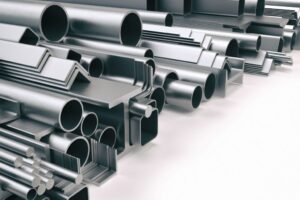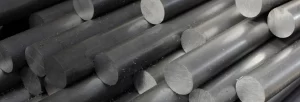Tool Steel in Medical Instrument Manufacturing: Biocompatibility and Precision
Introduction
Tool steel refers to a variety of carbon and alloy steels that are particularly well-suited for making tools. Tool steels are known for their heightened hardness, resistance to abrasion and deformation, and ability to hold a cutting edge. These characteristics make tool steels a prime material choice for manufacturing medical instruments and devices.
Medical devices and instrumentation have strict requirements when it comes to biocompatibility and precision. The human body is a sensitive environment, so materials that will be used invasively or implanted cannot provoke adverse reactions. At the same time, the increasing complexity of medical treatments and procedures demands surgical tools and devices that offer high dimensional accuracy and operate precisely as intended. As an exceptionally versatile class of steels, tool steels allow manufacturers to strike an optimal balance between biocompatibility and precision in medical applications.
Biocompatibility of Tool Steels
 Biocompatibility refers to the ability of a material to perform its function within the body without eliciting any undesirable local or systemic effects. When selecting materials for medical device fabrication, biocompatibility is a foremost concern.
Biocompatibility refers to the ability of a material to perform its function within the body without eliciting any undesirable local or systemic effects. When selecting materials for medical device fabrication, biocompatibility is a foremost concern.
Corrosion Resistance
Metals used in the body must be corrosion resistant to avoid releasing toxic metal ions through deterioration. The alloying additions in tool steel compositions, like chromium, nickel, and molybdenum, improve corrosion resistance. Proper heat treatment can also enhance corrosion resistance in tool steels.
Non-Toxic Composition
Many tool steel grades restrict or eliminate harmful elements like lead, cadmium, and mercury. Popular grades like A2, D2, and 420 contain non-toxic alloying additions and negligible impurity levels that enable their safe use in medical applications.
Non-Allergenic Grades
Nickel is a common alloying element in tool steels that boosts hardness and toughness. Unfortunately, nickel is also the most prevalent contact allergen among medical device users. For highly sensitive applications, tool steel grades like the 440 series forgo nickel addition to prevent allergic response.
Hemocompatibility
Direct blood contact raises further biocompatibility demands. Tool steel components must not trigger blood coagulation, platelet activation, or hemolysis. Proper processing and passivation enables tool steel instruments like scalpels and clamps to meet hemocompatibility requirements.
Sterilizability
Medical devices and instrumentation must be readily sterilized to prevent infection. Many tool steels exhibit high temperature stability that allows repeated sterilization by autoclaving. Tool steels are also compatible with chemical sterilization methods. Their corrosion resistance prevents damage during sterilization.
Biocompatibility Testing
Extensive biocompatibility testing validates the safety of tool steels for medical uses. Testing may include cytotoxicity, sensitization, irritation, systemic toxicity, implantation, and hemocompatibility assessments according to ISO 10993 standards. Tool steel medical hardware only progresses upon successfully demonstrating biocompatibility through this rigorous evaluation process.
Precision Capabilities of Tool Steels
In addition to biocompatibility, medical applications necessitate materials that can be fashioned into intricately designed components with fine dimensional tolerances. The attributes of tool steels make them well-matched to the extreme precision required in medical manufacturing.
Dimensional Stability
The high hardness of tool steels lends dimensional stability for highly accurate components. Tool steels maintain form and critical dimensions, with minimal warping, shrinking, or deformation under machining and processing stresses. Their temper resistance also enables tool steel parts to retain proper shape through repeated high temperature sterilization procedures.
Machinability
Tool steels strike a favorable balance of mechanical strength, hardness, and ductility. Their combination of hardness and moderate toughness allows tool steel alloys to be precisely machined to fine tolerances using conventional or CNC techniques. Skilled machining can produce extremely precise tool steel medical parts.
Grindability
The grindability of tool steels facilitates smooth edges, tight radii, and complex curvilinear geometries necessary for surgical instruments. Tools like drills, reamers, and orthopedic reconstructive devices rely on the grindability of tool steels for their contoured shapes and sharp, polished edges.
Surface Finish Capabilities
Tool steels’ fine grain structure supports excellent surface finishes. Careful machining and polishing can achieve surface smoothness down to single digit Ra microinch values. Mirror finishes below 10 Ra are possible on stainless tool steels. This reduces friction, aids cleaning, and improves aesthetics.
Heat Treatment Response
Varying heat treatment regimens allow extensive customization of hardness, strength, and toughness values in tool steels. This tunability lets manufacturers dial in properties to satisfy the stringent tolerance, dimensional, and operating demands of different medical tools and components.
Durability
Medical devices must maintain precision over prolonged service lives spanning thousands of procedures. The hardness and wear resistance inherent to tool steels preserves dimensional accuracy and tolerances even after repeated sterilizations and use. Their durability supports lasting precision and avoids premature replacement.
Testing Methods
Various methods exist to evaluate the dimensional precision of tool steel medical parts, like coordinate measuring machines and micrometers. Manufacturers also use scanning electron microscopes, surface profilometers, hardness testers, and other techniques to ensure tool steel components meet requirements.
Common Applications of Tool Steels in Medical Manufacturing
 The unique advantages of tool steels make them well-suited for the following medical applications:
The unique advantages of tool steels make them well-suited for the following medical applications:
Surgical Cutting Instruments
Surgical cutting tools like scalpels, scissors, bone cutters, and surgical knives rely on hardened tool steels to maintain a lasting, fine cutting edge through repeated use and sterilization cycles. Stainless grades like 420, 440C, and 15-5 PH are commonly used.
Dental Instruments
Dental picks, probes, excavators, and other tools utilize tool steels’ corrosion resistance and ability to take a fine edge. Stainless D2 or semi-stainless D3 steels help create sharp, durable dental instruments.
Orthopedic Implants
Tool steel alloys like 316L, 17-4PH, and 15-5PH offer the strength, corrosion resistance, and biocompatibility needed in fracture fixation devices, joint replacement components, and spinal implants.
Surgical Robotics
Robotic assist devices used for minimally invasive telesurgery contain tool steel components needing high strength, hardness, and dimensional precision like bushings, gears, shafts, and linkages.
Retractors and Clamps
Retractors and clamps used to maneuver tissue and provide surgical access are machined from hardened tool steels to resist wear and deformation from repeated sterilization and loading.
Needles and Syringes
Hypodermic needles and cannulae utilize stainless or high carbon tool steels that can be sharpened for smooth, controlled insertion with minimal pain and trauma.
Forceps and Pliers
The grasping jaws and hinges of surgical forceps and pliers demand hardened tool steels that retain dimensional tolerance after repeated stresses and sterilization exposures.
This covers some of the essential ways that tool steel alloys enable medical device manufacturers to meet critical requirements related to biocompatibility and dimensional precision. With their unique benefits, tool steels will continue serving as indispensable materials for fabricating surgical instruments and components.
Frequently Asked Questions
What are the most commonly used tool steel grades in medical devices and instrumentation?
The most common tool steel grades used in medical manufacturing include 440C, 420, 304/316/316L, D2, 17-4PH, 15-5PH, M2, A2, and 52100. These grades offer an optimal mix of hardness, corrosion resistance, durability, strength, and biocompatibility.
How does tool steel hardness affect medical device performance?
Hardness directly correlates with a tool steel’s ability to retain a fine cutting edge. Harder grades like D2 or M2 are needed for sharp cutting applications. Hardness also improves wear resistance and durability. However, too high of hardness can result in brittleness and difficult machining.
What heat treatment processes are used on tool steels for medical uses?
Common heat treatments include austenitizing, quenching, and tempering. These processes enhance hardness, strengthen tool steels, and refine the microstructure. Proper heat treatment is critical for balancing hardness with sufficient ductility and toughness.
Does tool steel biocompatibility depend more on composition or processing?
Both composition and processing significantly impact biocompatibility. Non-toxic alloys inherently offer greater biocompatibility. However, improper heat treatment, machining, passivation, or sterilization can still elicit adverse biological responses from even the most compatible grades.
How are tool steel medical devices typically sterilized?
Tool steels allow a range of sterilization techniques like autoclaving, chemical sterilization with hydrogen peroxide or ethylene oxide, UV irradiation, dry heat, and other methods. Autoclaving is one of the most common sterilization processes used.
Why are tool steels preferred over other alloys for medical parts and devices?
Tool steels are favored for their hardness, corrosion resistance, machinability, dimensional stability, heat treatability, and ability to retain a sharp cutting edge. Other materials cannot match this balanced combination of properties while still offering biocompatibility.
What surface finishes are applied to tool steel surgical instruments?
Mirror finishes down to 10 Ra microinch are typical for surgical cutting edges. Highly polished surfaces aid cutting, reduce friction and heat, prevent tissue sticking, and inhibit bacterial adhesion. Other tool steel component surfaces range from 125-250 Ra finishes.
How do manufacturers inspect the dimensional precision of tool steel medical parts?
Dimensional metrology techniques like coordinate measuring machines, optical comparators, profilometers, and micrometers help ensure tool steel parts conform to design specifications and tolerance limits. Components are typically graded to ABCD quality levels based on percentage of acceptable dimensions.
Can tool steels be 3D printed for medical manufacturing?
Yes, tool steel alloys like H13 can be successfully processed via powder bed fusion and directed energy deposition 3D printing. This enables complex tool steel components unachievable by conventional methods. However, additional post-processing is needed to improve surface finish, tolerances, and material properties.

